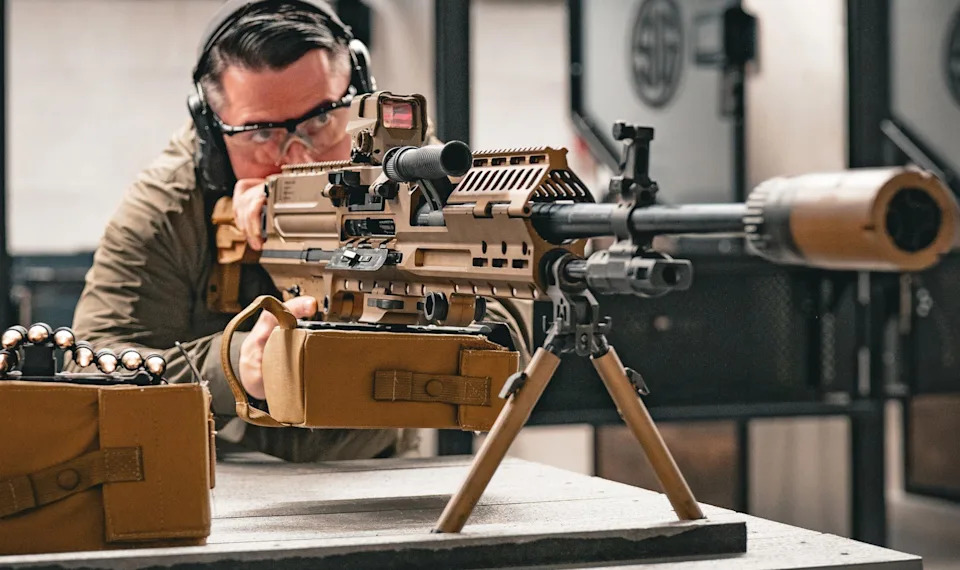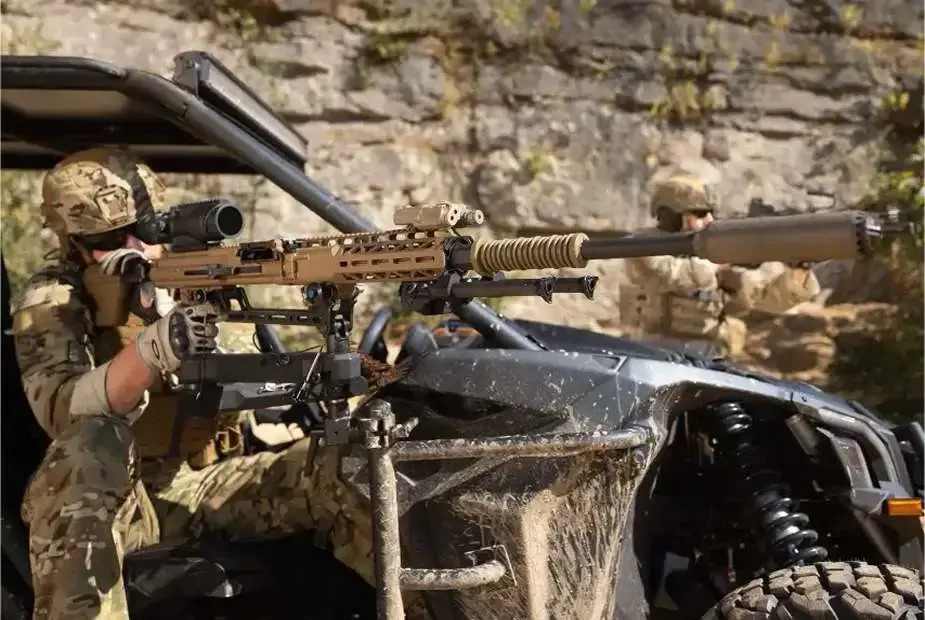
The M240 has been a staple of U.S. firepower for nearly 50 years. Heavy, rugged, and combat-proven, the belt-fed 7.62x51mm machine gun has been carried by generations of American troops in conflicts from the Gulf War to Afghanistan. Now, after decades of service, the Army is laying the groundwork to replace it.
This effort is still in its earliest stages, and there’s no official program of record yet. But buried in the Army’s fiscal year 2026 budget request is a clear signal: the service is preparing for what it’s calling the Future Medium Machine Gun, or FMMG.
Why replace the M240?
The M240 remains reliable and effective, but it comes with tradeoffs. The infantry M240B variant weighs over 27 pounds unloaded, and fully kitted out, it can approach 35 pounds, and that isn’t including ammo. Even the lighter M240L still tips the scales at around 22 pounds. That’s a lot of weight for dismounted troops to carry, especially in environments where speed and maneuverability are critical for survival.
There’s also the question of range. While 7.62 NATO rounds are effective out to 800–900 meters, adversaries are increasingly fielding weapons that can reach farther. The Russian PKP, Chinese QJY-88, and other belt-fed machine guns can deliver accurate fire at distances that challenge the M240’s effectiveness.
The Army’s goal with the FMMG is to close that gap, either by improving existing capabilities or moving to a new caliber entirely.
What might replace it?
So far, the Army hasn’t released formal requirements or a request for proposals. But based on current and previous programs, we can get a pretty good idea of what could compete.
In March 2025, the service issued a Request for Information (RFI) asking the defense industry to weigh in on the possibility of a next-generation medium machine gun that can fire .338 Norma Magnum and 6.8x51mm ammunition in the same weapon, with a conversion kit. The 6.8x51mm is what is fired from the Army’s new M7 and M250 weapons.
Top Stories This Week
King of Malaysia cancels purchase of UH-60 Black Hawks, calling them ‘flying coffins’
By Matt White
The .338 Norma has already seen use with U.S. special operations units in the Lightweight Machine Gun-Medium program (LMG-M), which is ongoing with SOCOM. It is a 300-grain bullet that travels at approximately 2,650 feet per second, delivering over 4,900 foot-pounds of muzzle energy. Roughly twice the 7.62 NATO stats. It stays supersonic past 1,300 meters and remains lethal beyond 1,500, nearly double the range of an M240.
The SIG Sauer MG 338 is one of those LMG-M submissions undergoing testing and evaluation. As the name implies, it fires the .338 Norma and is designed to give operators more range and punch than a 7.62 weapon without stepping all the way up to .50 cal. It can also be set up to fire 7.62 NATO and the 6.8x51mm SIG Fury round in addition to the .338. At 25 pounds, though, it isn’t necessarily lightweight, so besides the step-up in caliber, this contender doesn’t seem viable.

The Knight’s Armament Light Assault Machine Gun (LAMG) is a belt-fed, open-bolt machine gun available in both 5.56x45mm and 7.62x51mm NATO variants. The LAMG dramatically reduces felt recoil, making it easier to control in full-auto even at its very low weight of around 11 pounds. The 7.62 variant weighs as little as 14 pounds unloaded, nearly half the weight of a standard M240B. The LAMG uses a side-mounted feed cover and integrates modern features like M-LOK rails, quick-change barrels, and suppressor-friendly gas tuning.
FN Herstal’s Evolys is a next-generation belt-fed machine gun platform available in 5.56mm and 7.62mm NATO configurations. Weighing in at roughly 12 pounds (5.56) and 14.3 pounds (7.62), the Evolys is significantly lighter than legacy GPMGs like the M240, while incorporating features more commonly found on rifles. It uses a top-feed belt system with side ejection, offers ambidextrous controls, and is designed with a monolithic upper rail for optics and laser devices.
The Ruggedized, Enhanced Army Precision Rifle (REAPR), is a .338 Norma Magnum belt-fed machine gun in development by Ohio Ordnance Works, designed to deliver effective fire out to 2,000 meters while remaining man-portable at around 23 pounds. It uses a short-stroke gas piston, fires from an open bolt, and incorporates familiar M240 design elements with modern upgrades in barrel mounting, recoil control, and optics compatibility. Still in development and not yet fielded, the REAPR is positioned to compete with platforms like the SIG MG 338, especially if the Army pursues long-range overmatch in its future machine gun plans.

What happens next
If the Army receives the funding for the FMMG program, the effort could move into a prototyping phase similar to the process used for the Next Generation Squad Weapon program. That could involve competitive evaluations, live-fire trials, and eventually a production contract. Or it could stall out entirely. There are more considerations leaders must consider than we covered, but we dig into it in our video for YouTube, which you can check out here.






Comments